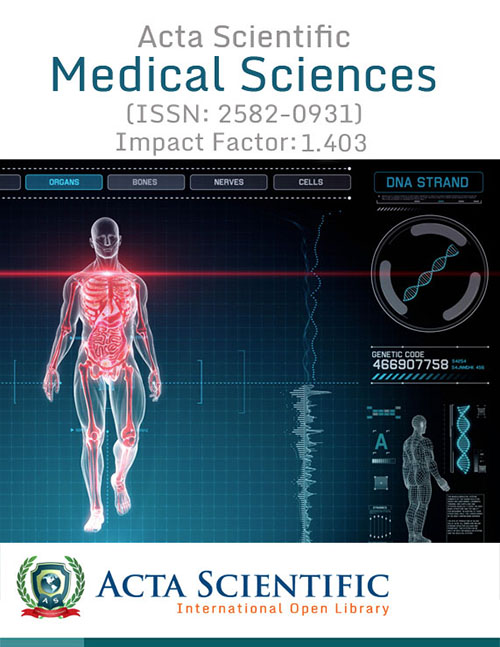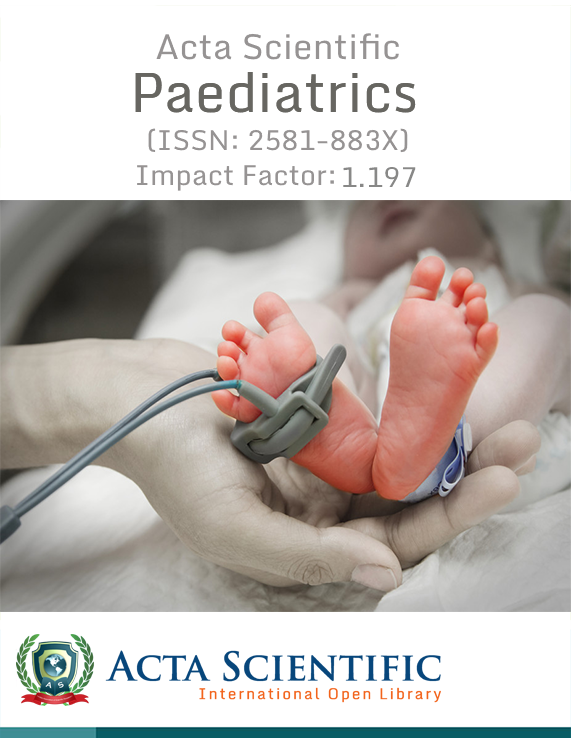Acta Scientific Ophthalmology (ASOP)
Review Article Volume 3 Issue 7
Raju Kaiti1*, Purushottam Shah2, Birkha Bogati2, Ranjila Shyangbo2, Manish Dahal3 and Bishal Hamal3
1M. Optom, Consultant Optometrist, Nepal Eye Hospital, Nepal
2Optometry Student, 3rd year, Bachelor of Optometry and Vision Science,
National Academy of Medical Sciences, Nepal
3B. Optom, Consultant Optometrist, Nepal Eye Hospital, Nepal
*Corresponding Author: Raju Kaiti, M. Optom, Consultant Optometrist, Nepal Eye Hospital, Nepal.
Received: May 13, 2020; Published: June 10, 2020
Computer and mobile computing devices such as laptops, tablets, or cell phones are being used by increasingly large number of people today. This has led to variety of ocular symptoms which includes eye strain, tired eyes, irritation, redness, blurred vision, and diplopia, collectively referred to as Computer Vision Syndrome (CVS). CVS may have a significant impact not only on visual comfort but also occupational productivity since between 64% and 90% of computers users experience visual symptoms which may include eye strain, headaches, ocular discomfort, dry eye, diplopia and blurred vision either at near or when looking into the distance after prolonged computer use. So, CVS acts like slow poison for ocular and visual comfort, if not taken into consideration timely. CVS has a multifactorial causation. Several factors have been linked to symptoms. But how often has it been diagnosed and managed properly? The answer is “not satisfactory”. Most of CVS cases have been dispensed merely with eye drops and no other orthoptic interventions and ergonomic awareness are suggested, especially in developing countries like Nepal. A specially designed ocular examination for computer users and associated counseling about the current good practice in computer use would go a long way in preventing loss of productivity and morbidity from the condition.
Keywords: Binocular Single Vision Disorder; Blue Light; Computer Vision Syndrome; Dry Eyes; Ergonomics
References
- Barar A., et al. “[Ophthalmologist and “computer vision syndrome”]. Ophthalmologia3 (2007): 104-109.
- Chu C., et al. “A comparison of symptoms after viewing text on a computer screen and paper”. Ophthalmic and Physiological Optics 1 (2011): 29-32.
- Akinbinu TR and Mashalla YJ. “Impact of computer technology on health: computer vision syndrome”. Academic Journal3 (2014): 20-30.
- American Optometric Association. “Computer Vision Syndrome” (2020). https://www.aoa.org/patients-and-public/caring-for-your-vision/protecting-your vision/computervisionsyndrome#:~:text=Computer%20Vision%20Syndrome%2C%20also%2referred,digital%20screens%20for%20extended%20periods. (cited on 18th April 2020)
- Rosenfield M. “Computer vision syndrome: a review of ocular causes and potential treatments”. Ophthalmic and Physiological Optics 5 (2011): 502-515.
- Scheiman Mitchell and Bruce Wick. “Clinical Management of Binocular Vision”. Edition 4th Philadelphia: Wolters Kluwer Health/Lippincott Williams and Wilkins (2014): 547-559.
- Stedman’s Medical dictionary, 26th Baltimore: Williams and Wilkins (1995): 389.
- Sheppard AL and Wolffsohn JS. “Digital eye strain: prevalence, measurement and amelioration”. BMJ Open Ophthalmology 3 (2018): e000146.
- Blehm C., et al. “Computer Vision Syndrome: a review”. Survey of Ophthalmology 3 (2005): 253-262.
- Ranasinghe P., et al. “Computer Vision Syndrome among computer office worker in developing country: an evaluation of prevalence and risk factors”. BMC Research Notes 1 (2016): 150.
- Portello JK., et al. “Computer-related visual symptoms in office workers”. Ophthalmic and Physiological Optics5 (2012): 375-382.
- Guillon M and Maïssa C. “Tear film evaporation--effect of age and gender”. Contact Lens and Anterior Eye 4 (2010): 171-175.
- Courtin R., et al. “Prevalence of dry eye disease in visual display terminal workers: a systematic review and meta-analysis”. BMJ Open1 (2016): e009675.
- Tauste A., et al. “Effect of contact lens use on computer vision syndrome”. Ophthalmic and Physiological Optics2 (2016): 112-119.
- Vilela MAP., et al. “Prevalence of asthenopia in children: a systematic review with meta-analysis”. Journal of Pediatrics 4 (2005): 320-325.
- Kharel Ranju and Khatri Anadi. “Knowledge, Attitude and practice of Computer Vision Syndrome among medical students and its impact on ocular morbidity”. Journal of Nepal Health Research Council 3 (2018): 291-296.
- Logaraj M., et al. “Computer vision syndrome and associated factors among medical and engineering students in Chennai”. Annals of Medical and Health Sciences Research2 (2014): 179-185.
- Sameen Kokab and Mohd Inayatullah Khan. “Computer vision syndrome: A short review”. Journal of Evolution of Medical and Dental Sciences6 (2012): 1223-1226.
- Hales TR., et al. “Musculoskeletal disorders among visual display terminal users in a telecommunications company”. Ergonomics10 (1994): 1603-1621.
- Iwakiri K., et al. “Survey on visual and musculoskeletal symptoms in VDT workers”. Sangyo Eiseigaku Zasshi 6 (2004): 201-212.
- Torry Jon. “Understanding computer vision syndrome”. Employment Relation Today Spring 30.1 pro Quest central (2003): 45. J. Torrey, "Understanding computer vision syndrome", Employment Relations Today 30.1(2003):45-51
- Awrajaw Dessie., et al. “Computer Vision Syndrome and Associated Factors among Computer Users in Debre Tabor Town, Northwest Ethiopia”. Hindawi Journal of Environmental and Public Health (2018): 4107590.
- A Sen and Stanley Richardson. “A study of computer-related upper limb discomfort and computer vision syndrome”. Journal of Human Ergology 2 (2007): 45-50.
- Sheedy JE and Shaw-McMinn PG. “Diagnosing and Treating Computer-Related Vision Problems”. Butterworth Heinemann (2003).
- Nvision: Computer vision syndrome: What is it, and how long does it last? (2020). https://www.nvisioncenters.com/conditions/computer-vision-syndrome/ (cited on 20th April 2020)
- Christian Cajochen., et al. “Evening exposure to a light-emitting diodes (LED)-backlit computer screen affects circadian physiology and cognitive performance”. Journal of Applied Physiology5 (1985): 1432-1438.
- Bohr PC. “Efficacy of office ergonomics education”. Journal of Occupational Rehabilitation 10 (2000): 243-255.
- Rossignol AM., et al. “Visual display terminal use and reported health symptoms among Massachusetts clerical workers”. Journal of Occupational Medicine 2 (1987): 112-118.
- Saari Richard. Tribune [Welland, ont] Computer Vision Syndrome: [Final edition] (2004): A10.
- Murali Mohan Gurram: ‘Computer Vision Syndrome’. Health: A Journal devoted to Healthful Living 90(2012):30-33
- Anshel Jaffrey. “Computer Vision Syndrome: causes and cure”. Managing office Technology 42.7 (1997): 17-19.. Anshel J. Visual Ergonomics Handbook. In: Anshel Jeffrey., editor. Corporate Vision Consulting, Encinitas. 1st ed. California, USA: Taylor & Francis Grp; 2005. p. 24. Chapter 1.
- Raju Kaiti., et al. “Evaluation and Management of Refractive Amblyopia with Associated Non Strabismic Binocular Vision Dysfunctions Through Vision Therapy: A Case Report from Nepal”. EC Ophthalmology12 (2019): 1-8.
Citation
Citation: Raju Kaiti.,et al. “Computer Vision Syndrome: Is it being Diagnosed and Managed Properly?”. Acta Scientific Ophthalmology 3.7 (2020): 13-20.
Copyright
Copyright: © 2020 Raju Kaiti., et al. This is an open-access article distributed under the terms of the Creative Commons Attribution License, which permits unrestricted use, distribution, and reproduction in any medium, provided the original author and source are credited.
Journal Menu
Metrics
News and Events
- Publication Certificate
Authors will be provided with the Publication Certificate after their successful publication - Last Date for submission
Authors are requested to submit their manuscripts before December 02, 2025.


















